- Written by Zebraman
- Hits: 4805
Genetic Traits
| Chestnut Flanked White (CFW) |
| Fawn (F) |
| Lightback (LB) |
| Grey (G) |
| Black Face (BF) |
| Dominant Silver (DS) |
| Dominant Cream (DC) |
| Fawn Cheek (FC) |
| Grey Cheek (GC) |
| Crested (CR) |
| Black Breasted (BB) |
| Black Cheek (BC) |
| Penguin (P) |
| Pied (PI) |
| Orange Breasted (OB) |
| Resessive Silver (RS) |
| White (W) |
| Yellow Beak (YB) |
| Eumo (E) |
If you have any questions please do not hesitate to contact me.
Use the contact form
Or
Visit the Forum @ Zebra Finch Forum
- Written by Zebraman
- Hits: 6268
These pictures show in some detail the photo cage I built and use to take all the pictures of my birds, It's quite simple in construction and only took a couple of hours to put together.
| Photo from the front, the rebate for the Perspex is two smaller prices of wood cut to length and then glued to the side of the box leaving a small gap. It avoids having to rebate the sides. | 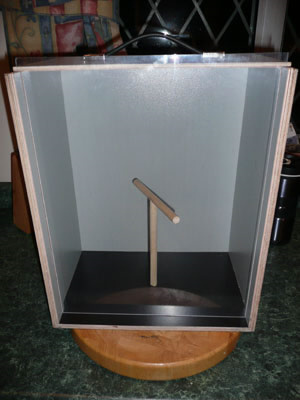 |
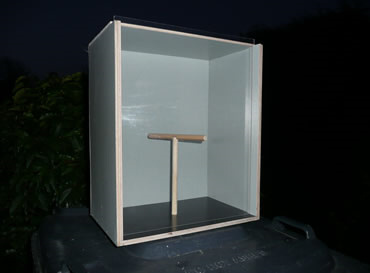 |
A further picture form another angle. |
| Another shot from the front. | 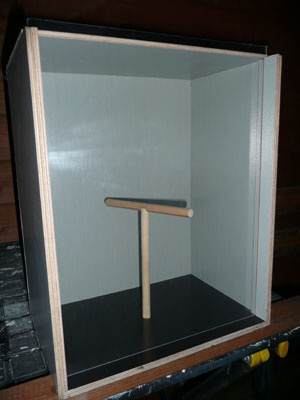 |
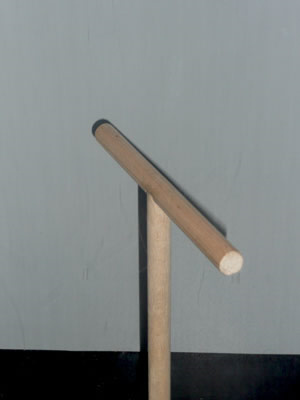 |
And finally a close up of the perch. notice the angle of the perch, this so pictures can be taken on an angle to avoid direct reflection from a flash. |
If you have any questions please do not hesitate to contact me.
Use the contact form
Or
Visit the Forum @ Zebra Finch Forum
- Written by Zebraman
- Hits: 4528
Water is a very important part of your birds daily needs, although the Zebra Finches natural habitat is some what arid, since being domesticated they have become more accustomed to a regular water supply, so it is very important that their water is changed at least once a day and all receptacles cleaned thoroughly.

I only give my stock water that has been boiled and left to stand for 24 hours, this ensures that all the chemicals have evaporated prior to use, in some cases I will add a vitamin "D" supplement for increased health.
If you have any questions please do not hesitate to contact me.
Use the contact form
Or
Visit the Forum @ Zebra Finch Forum
- Written by Zebraman
- Hits: 4369
I mix my own seed and have done for several years now, there are a number of advantages to this, the first being when mixing your own you know what your getting in relation to content. The second being that if you purchase plain seed i.e. panicum millet, white millet, plain canary etc, then there’s no vat on your purchases resulting in more seed for your money. The down side is that you have to mix it, but if you purchase suitable containers you can mix your seed to your own requirements as and when you need it. There's also a further advantage "Cost Savings" and in this day and age the more you can save the better for you?I recently carried out a poll of bird keepers in the UK and Holland, with some quit interesting results.
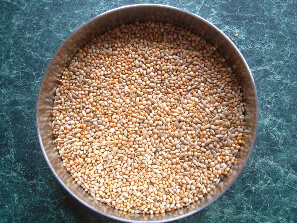 |
Onto my mix, for those of you who are interested in having a go I have detailed below each quantity in parts per type, these measures can be anything form 1kg to a scoop of a contain, it doesn't’t really matter as long as you don’t use to much of certain types of seed putting to much of some type of seed will only result in your birds not eating it. Panicum Millet 3 parts White Millet 3 parts Plain Canary 2 parts Red Millet 1 part Japanese Millet 1 part Niger ½ part |
|
The above ingredients mixed together will give you a standard Belgium type mix, you can also add the other ingredients to make tonic seed to help bring your birds into breeding condition or to encourage sick and newly fledged young to feed. Add some aniseed either in pure, liquid or seed form, just remember only use this in moderation as a little goes a long way and the smell can be fairly overpowering. Birds love the smell of aniseed, it attracts sick birds to the seed and encourages them to feed. I also add pin headed oats to my mix as well as perillia and some rape seeds, again this is all down to personal preference and knowing what your birds like. My advice would be start with the basics and move onto the finer points later, but by giving your birds more variety they will be a lot happier which means they will be more likely to produce go healthy stock. |
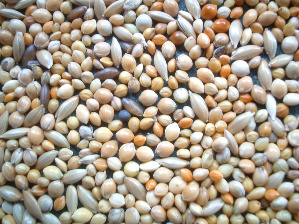 |
If you have any questions please do not hesitate to contact me.
Use the contact form
Or
Visit the Forum @ Zebra Finch Forum
- Written by Zebraman
- Hits: 4387
All year round I give my birds a selection of green food including chick weed and dandelion. You must be very careful when collecting these types of greens as in some cases they may have been sprayed with insecticide by local authorities If your not absolutely sure then don't feed them to your birds as there is a great risk of fatalities by feeding greens that have been sprayed. If these types are not available, water cress is an excellent alternative and a much safer choice, it can also be given in the winter months when the summer greens are not available. I have a very good farm shop local to me who provides as much as I want at a very reasonable price.
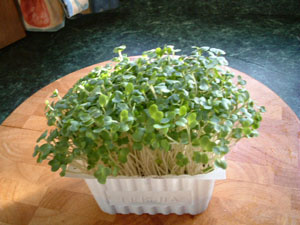
If you have any questions please do not hesitate to contact me.
Use the contact form
Or
Visit the Forum @ Zebra Finch Forum

